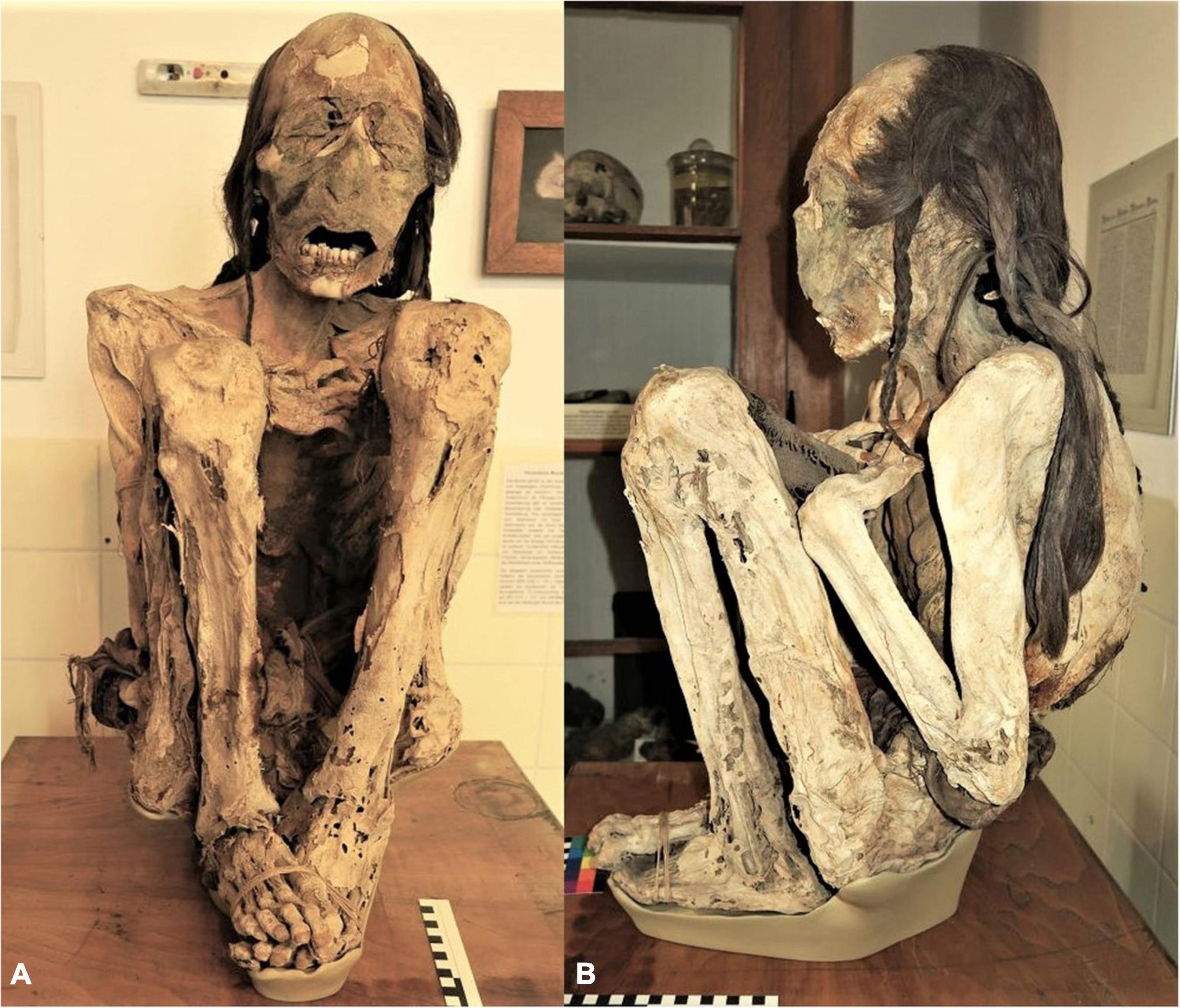Researchers recently used CT scans to peer inside three mummies from South America, and they discovered evidence suggesting that two of the individuals were murdered. Warning: This article contains photos of one of the bodies that may be disturbing.
The mummies date to between 900 CE and 1300 CE and are from Peru and Chile; two are male and one is female. Though the female appears to have died from natural causes, CT scans of the male mummies revealed that they were likely fatally bludgeoned and stabbed. The team’s research describing the work is published today in Frontiers.
“Violent trauma rates in South American populations seem to have been even higher than previous studies on skulls or mere skeletons had indicated,” said study co-author Andreas Nerlich, a pathologist at the Academic Clinic Munich-Bogenhausen in Germany, in an email to Gizmodo.
The mummies were brought to Europe sometime in the mid- or late-19th century, Nerlich said. Until now, they hadn’t been investigated with comprehensive modern imaging. In the recent work, the researchers CT-scanned the mummies’ bodies to investigate their ages, state of preservation, and their possible causes of death.

The team first found that one mummy, now at the University of Marburg in Germany, was male — contradicting the original belief that the body was female.
But the more tantalising detail: In the paper, the researchers write, “There is no doubt that the individual of the Marburg mummy was a victim of a severe and finally lethal interpersonal violence.” The team documents a heavy blow to the victim’s face and evidence of a stab wound that lacerated an aorta and punctured a lung. The team thinks the ultimate cause of death was blood loss from the stab wound.
They believe the other male mummy suffered from recurrent trauma, based on numerous skull fractures that had healed in life. Dislocated parts of the cervical spine indicated a massive blow to the back of the head, which may have been the fatal injury.
Nerlich told Gizmodo that previous studies on skulls from Northern Chile and Peru indicated a trauma rate of between 5% and 35% — a broad range, but one that Nerlich thinks could be higher based on the damage to the recently scanned individuals. “We hope that similar investigations of further mummies from museums/collections may provide more information about trauma types and rates,” he added.
More: Body Preserved in a Bog Since the Iron Age Still Contains Undigested Last Meal
